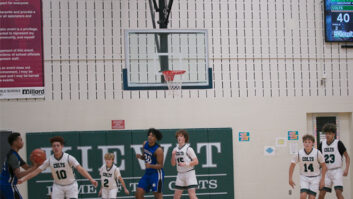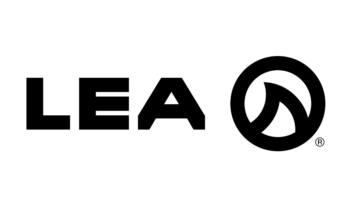Superficially, it might appear that there are few differences between digital cinema technology and the same technology – projectors, media servers, sound systems – used in commercial audiovisual applications. Of course, there’s some degree of truth in that – but, in fact, the two markets are quite different. Functionality, quality, reliability and interoperability are not, for example, defined by an industry standard for commercial applications as they are for digital cinema – a point made by Jim Farney, Dolby’s director of marketing, motion picture.
“Typically, products for the commercial audiovisual world allow much greater design freedom to a manufacturer, with very few defined requirements and constraints,” he says. “Digital cinema is rigidly defined by the DCI [Digital Cinema Initiatives] specification – and it includes much greater emphasis on the highest picture quality. D-Cinema also mandates the XYZ colour space, which is not typically used outside digital cinema; plus, it requires exceptional security efforts to ensure that content plays only on the screen it is intended for at the time it is intended to be screened.”
His point raises an interesting question about the opportunity for manufacturers to differentiate their products in a market where standards of performance are rigorously specified. It is, it seems, less of an issue than might appear to be the case. “All cars have to have four wheels and an engine,” laughs Tom Cotton, vice president of business development for Technicolor Digital Cinema, “but no one would ever claim that they all look or perform the same. The DCI specification is a roadmap, not a blueprint.” He goes on to note the opportunity for differentiation driven by price, product or service.
“The point of DCI is to provide a baseline,” agrees Blair Parkin, founder and managing director of consultancy Visual Acuity. “If manufacturers can improve specifications and value for money beyond the baseline then it will increase their market share. I do not believe that the DCI format is restricting anything, quite the reverse in fact. It has stopped unhealthy wars around the meaning of terms and specs, and focused server and projector manufacturers on picture quality issues.”
“It’s possible to meet the parameters of the specification – and then exceed it for an advantage,” says Nancy Fares, business manager for Texas Instruments’ DLP Cinema products group. “It’s also possible to deliver in areas where there is no specification. That’s how we plan to continue to win.”
That approach is mirrored by GDC. “We listen to our customers’ needs and provide new features to improve the workflow of the digital cinema work environment,” says Dr Man Nang Chong, founder and CEO of GDC Technology. “Some of those features include the seamless integration of our server with the customers’ choice of point-of-sale system, on-screen advertisement system, theatre management system or digital automation system.”
Choosing software
Integration, flexibility and ‘future-proofing’ are the keys – and software-based approaches deliver those. “Being almost entirely software based allows the Qube system to leverage developments in the computer industry and bring to market format-independent, powerful and flexible products,” notes Nigel Dennis, head of business development at Qube Cinema Europe. “The architecture of the Qube product family has been conceived with the future in mind and provides an integrated workflow, from mastering and distribution to playback, reporting and archival.”
“There is still an ability to differentiate products, but that is limited to a degree by the financial constraints imposed by the Virtual Print Fee models currently providing the bulk of D-Cinema deployment financing,” says Farney.
It is, as always, a question of providing value that customers will pay for. But to return to the question of the differences between digital cinema and commercial AV. There’s also the issue of the higher performance required, especially from servers.
“There are higher requirements in terms of security – for example, Federal Information Processing security requirements to protect content and resolution,” says Chong. “Playing back a 2 million pixel image at 250MB per second is certainly a challenge that we have had to rise to.”
“D-Cinema has a much wider colour gamut than anything in the commercial space and much more complex security parameters that need to be met,” says Brian Claypool, senior director of product development for digital cinema at Christie Digital. “Look at it like this: an average DVD is anywhere from 4 to 9GB – but a typical D-Cinema version of the same DVD title would be around 200GB. That’s quite a bit more data to process and display than is traditionally found in the commercial space.”
Bigger issues
But the technology challenges are perhaps of less importance than three other challenges – reliability, cost and ease of use. Few projectors or servers in the commercial world, for example, are the primary means of generating revenue for their owners: in the cinema world, however, no picture equals no customers, equals no income. Few projectors or servers in the commercial world are bought in tens or hundreds – the number that is required by many exhibitors. As such, cost of acquisition and ownership is always going to be a challenge, with relatively small per-unit price differences adding up to significant numbers. And ease of use?
As Raf Rentmeesters, Barco’s product manager for digital cinema, points out: “The success of our products is determined in a large part by their ease of use. Getting the technical personnel and projectionists to embrace your product is of very high value; it’s about gaining their confidence that the Barco technology will guide them through this intense transition into the digital world. This is a challenge, as most theatre technicians and operators have profound knowledge of mechanics and analogue projection, but little experience with high-tech electronics and optics.”
“Cinemas are used to buying projection equipment once and then operating it for 20 years and longer. Every technical improvement – such as digital sound – is simply added to the existing platform without any major issues,” says Oliver Pasch, head of digital cinema, Europe for Sony. “So life expectancy is supposed to be the same in digital cinema. That’s why we build our digital cinema projectors to do a heavy-duty job 365 days a year. It’s not comparable with a business projector in a meeting room at all.”
Then there’s the issue of cost – and it’s not just about meeting the rigorous demands of the DCI specification. “The greatest challenge in developing digital cinema equipment is the low volumes relative to the AV world,” points out Cotton. “There are only 100,000 screens in the world, compared with, for example, over 300 million TVs in the US alone. It’s much easier to bring costs down in a market that offers significant volumes.”
Top-end product
It is typically true, in many markets, that developments at the high end eventually trickle down into the rest of the market. Given that digital cinema is widely seen as the high end of audiovisual technology, will we see the commercial AV world benefiting from its innovations?
“Companies such as Barco are active both in AV and digital cinema markets,” says Rentmeesters. “It’s obvious that what we learn from one market on cost reduction, reliability and improved ease of use is also going to be implemented in the other.”
At a high level, that may be true. However, there is a larger issue, namely that Hollywood is determined to preserve the cinema-going experience as unique – one that cannot be replicated in the home – and it is said that restrictions have been placed on implementing digital cinema technology in products intended for other applications. It is also true that the experience of watching film is different from the experience of watching video. Where commercial applications are highly video-centric, digital cinema is about recreating the experience of watching film.
“Some developments can be used in high-end commercial projectors,” says Mark Kendall, manager for business development and digital cinema at NEC Display Systems, “but generally these products are very specific for their application.”
“Certain aspects of cinema are likely to remain unique for quite some time,” notes Fares.
Wider benefits
But Christie certainly believes that the company’s involvement in digital cinema has benefited other parts of its business. “Christie’s newest range of projectors, the M-Series, feature a patent-pending motorised yellow-notch filter to improve the colour gamut derived from utilising UHP lamps,” says Claypool.
“This technology was developed from the yellow-notch filter system used in our digital cinema products designed for post-production and then commercial exhibition. It’s also the case that our automatic lamp alignment systems and use of xenon bubble-lamps have aided us greatly in developing brighter projection systems in smaller chassis using lower-powered lamp systems.”
If there is one place, however, where it seems as if the digital cinema world and the commercial audiovisual world are coming together, it’s in the area of 3D. According to Texas Instruments, more than 500,000 3D-enabled TVs from Mitsubishi and Samsung had shipped by the early part of 2008 – and the company expected that number to have risen to 1 million by the end of the year.
3D commercial projectors are widely available – and box-office results for movies such as Beowulf, Meet The Robinsons and Hannah Montana have convinced Hollywood that 3D is the future, with up to 20 3D movies planned for 2009. For many in the industry, it provides a compelling reason to accelerate the roll-out of digital cinema.
“3D on large screens has been around for over 50 years,” says Parkin. “So what’s the difference this time? Well you just have to go to shows such as IBC or NAB and see that the whole production technology chain is getting ready for 3D. It is rapidly growing beyond a niche, and digital delivery creates a sustainable technical and commercial platform for 3D.
“I believe that particularly the special venues that were formerly large-format theatres, and the use of alternative content – scientific, sports, educational, etc – will be a new and significant driver for 3D.”
DCI has created an addendum to the specification that addresses 3D – noting, for example, the requirement for the ability to deliver 48 frames per second (24 frames for each eye).
“That increases the processing power required within the server,” notes Farney. “Not all server manufacturers, or all D-Cinema projectors, can maintain full compliance with the DCI specification for 48fps content. That is not a problem for Dolby servers.”
Processing power isn’t the only issue. “The major technical challenge for 3D exhibition is the light level,” says Curt Behlmer, chief operating officer of Technicolor Digital Cinema. “All current 3D projection systems consume a significant amount of light and it is challenging to project 3D images with the proper light level on large screens. There are workarounds, including double-stacking projectors, but not long-term or inexpensive solutions.”
“More than 50% of the light from the projector is lost in any 3D system,” notes Kendall. “However, projectors such as the NC2500, with its 26,000 lumens, ensure that 3D can still be shown on screens up to 18m wide.”
Christie addressed this issue with the announcement of Brilliant3D at ShowEast in Orlando in October 2008.
“Brilliant3D uses a technique often referred to as triple flash, which delivers 33% increased brightness on 3D flat images and 12% increased brightness on 3D scope images,” explains Claypool. “The increase in brightness is derived from the utilisation of the full DMD [digital micromirror device] panels.”
Competitive market
If there is a shadow over the future of 3D, it’s that there are competing solutions from Real D and Dolby 3D. The advantage of the Dolby system is that it does not require a special screen, whereas the Real D alternative requires a silver screen. The glasses used by the Dolby solution, however, are significantly more expensive than the Real D offering. Will this competition prove critical? Chong doesn’t believe so.
“The primary technical challenge lies in making our servers interoperable with the different types of 3D solutions,” Chong says. “However, we are proud to say that GDC’s digital cinema servers are now compatible with all the major 3D technologies available in the market.
“Beyond that, our SA-2100A Digital Cinema Server is the first to offer a quad-link feature to support a dual-projector system. This means that only one server is needed to run two projectors for the screening of high-quality 3D content on a large screen.”
Will 3D prove to be the last technology development in digital cinema? The industry consensus is that the technology is now very stable, with only incremental improvements expected in image quality, reliability, security, integration, ease of use and so on. “The message,” says Fares, “is that there is no need to wait.” IE







